Breathable Plaster To Add Charm & Fight Off Damp
Breathable plaster is a key component in keeping old houses dry, warm and free of dampness.
For those new to old houses, why you would choose a breathable plaster over a modern material might not be immediately clear.
In short, it is all to do with the construction of an old house’s walls and how they deal with moisture.
In this blog, we will explore the benefits of breathable lime plaster in old houses compared to modern gypsum plaster.
What is Breathable Plaster?
Breathable plaster or lime plaster has a higher degree of permeability than modern plaster such as gypsum.
This means that moisture can travel through the wall with greater ease rather than getting trapped inside the wall.
This is a vital part of how old houses built with solid masonry walls deal with moisture
Lime plaster is a traditional building material that has been used for centuries in construction. It is composed of hydrated lime, sand, and water, and it is mixed on-site before application.
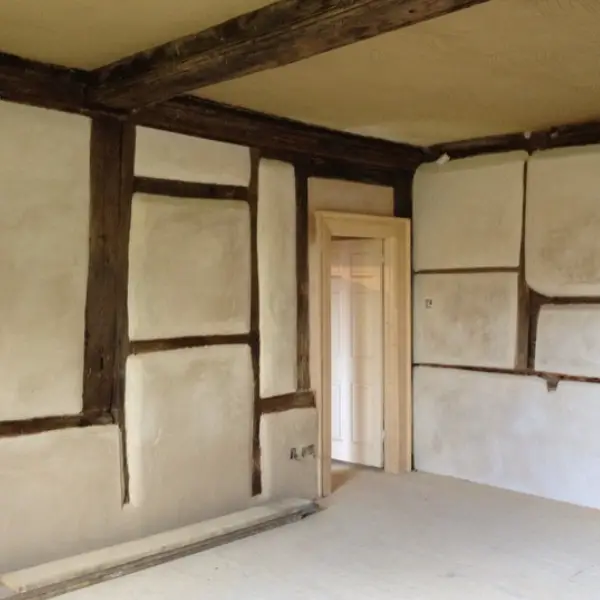
In addition to its moisture management capabilities, lime plaster offers a number of advantages over modern gypsum plaster. For example, it is a more sustainable material, as it is produced from naturally occurring limestone and does not require energy-intensive processing.
It is also more compatible with traditional building materials, such as timber and stone, and it can be used to achieve a range of different textures and finishes, from smooth and polished too rough and rustic.
Why is breathable plaster better for old houses?
Breathable plaster, specifically lime plaster, is a better choice for old houses for a number of reasons. One of the key challenges presented by old houses is the lack of cavity walls, which makes them more vulnerable to moisture damage.
The way in which older houses deal with this challenge is to allow water vapour to pass through the walls through the use of breathable materials. This enables the moisture to evaporate when it reaches the surface.
It is therefore crucial that hard, unbreathable materials such as gypsum plaster don’t impede the ability of a wall to breathe and deal with any water vapour.
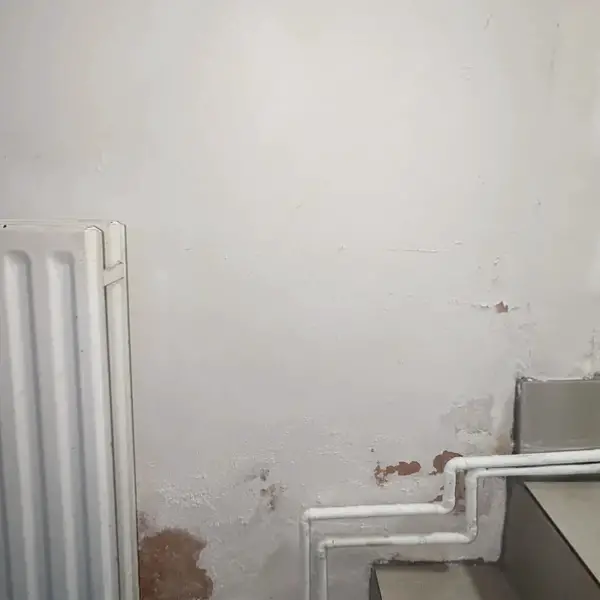
Another advantage of lime plaster is that it is more flexible than gypsum, which means that it is less likely to crack or crumble when the building materials expand and contract due to changes in temperature or moisture levels.
Again in old houses, this is highly beneficial as single masonry walls are more exposed to the elements and are therefore more susceptible to temperature changes.
In addition to its practical benefits, breathable plaster can also help preserve the historical aesthetic of old houses. Lime plaster is a traditional building material that has been used for hundreds of years, and it offers a range of textures and finishes that can help recreate the look and feel of historic buildings.
Breathable plaster vs. gypsum plaster
- Breathability – Lime plaster is far superior in this category and will help your walls breathe and disperse water vapour.
- Flexibility – again breathable plaster is superior in this area. Gypsum plaster is a harder material, which means it is more susceptible to cracking or crumbling over time, especially in old houses which often suffer from larger temperature changes and potentially uneven foundations or walls that can shift over time.
- Comparability – As gypsum plaster is a harder material than lime plaster, it means that it can be more difficult to work with when it comes to creating textures and finishes that are consistent with the historical aesthetics of old houses.
- Cost – Gypsum plaster is a more cost-effective and widely available material as it is the defacto choice in most modern houses.
All in all, we would highly recommend the use of breathable plaster in your old house. It pretty much wins in all categories except that of cost. If however, you are planning on spending a good amount of time in your old house we think there is no better option.
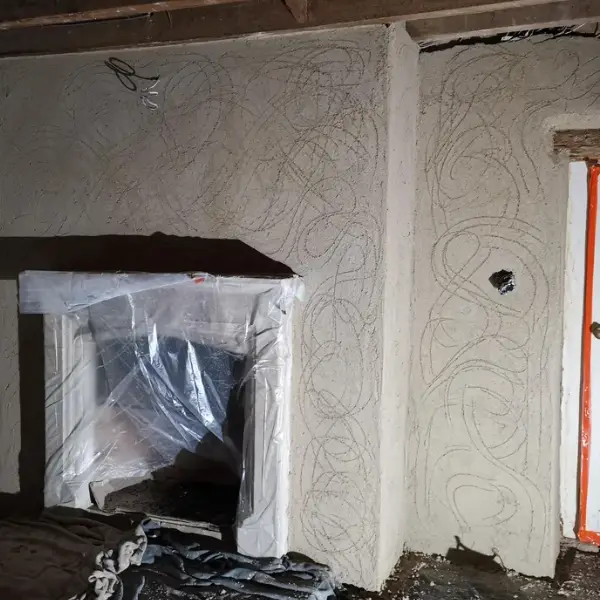
Breathable plaster is one method of contending with damp in an old house, but there are many more factors to consider. See our full guide on how to fix damp in an old house.
Breathable plaster – Applying it
The process of applying breathable plaster, such as lime plaster, can be more involved than that of non-breathable materials like gypsum.
The first step is to prepare the surface by cleaning and removing any loose or crumbling materials. This is particularly important in old houses, where there may be layers of paint or other materials that need to be removed before fresh plaster can be applied.
After the surface has been prepared, the plaster is mixed on-site and applied in thin coats. The number of coats required will depend on the desired thickness and texture of the finished surface.
The plaster should be allowed to dry between coats and may require several weeks or months to fully cure, depending on the temperature and humidity levels.
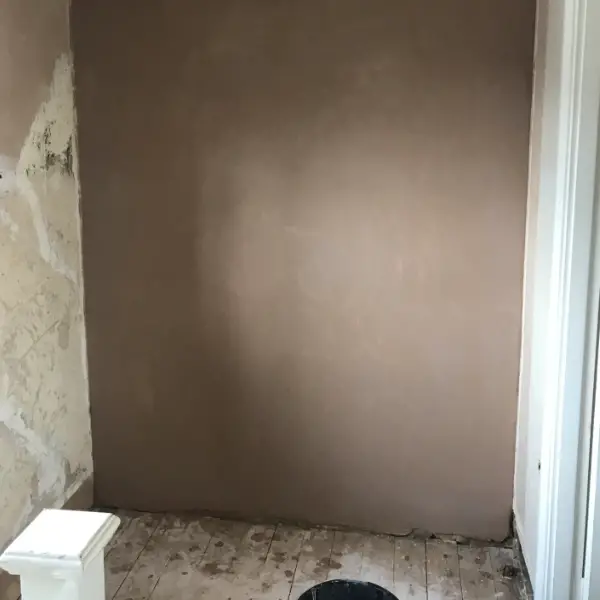
Maintaining breathable plaster
To maintain breathable plaster over time, it is important to monitor moisture levels and address any issues that arise promptly.
Keeping moisture levels at bay in an older house is crucial and requires more thought than in a modern home.
Another key factor to consider is what you cover your new breathable plaster with. If you decide to cover it with non-breathable materials such as vinyl wallpaper or impermeable paint it can trap moisture inside the walls and undo the efficacy of the breathable plaster.
This Kinda Old House Top Tip
We’d highly recommend using breathable paints. If you’ve gone to the trouble of using breathable plaster it’s worth going to that next step. Check out our guide on breathable paints for more information.
Regular cleaning and maintenance can also help extend the life of breathable plaster. This includes normal activities like dusting or vacuuming to remove dirt and debris.
Unfortunately, over time and cracks and damage will eventually occur to your lovely and smooth plaster. As with any plaster repairs action should be taken to avoid further deterioration. This may include filling in cracks with fresh plaster and repairing areas of damage with compatible materials. Be sure to use a lime-based filler when making more everyday repairs to your plaster.
An additional step would be to periodically apply a breathable sealer to protect the surface from moisture and other environmental factors.
Lime plaster involves a little more cost and effort than regular gypsum but is really worth it when restoring an older house.
Understanding how breathable plaster helps your walls and plays a key part in keeping damp at bay will give you a better understanding of the benefits that breathable plaster brings to an old house. The benefits far outweigh the additional cost and time to apply.
Although lime in plaster won’t get rid of damp on its own, it does player a key role. For more information on removing damp in old houses, see our full range of guides.
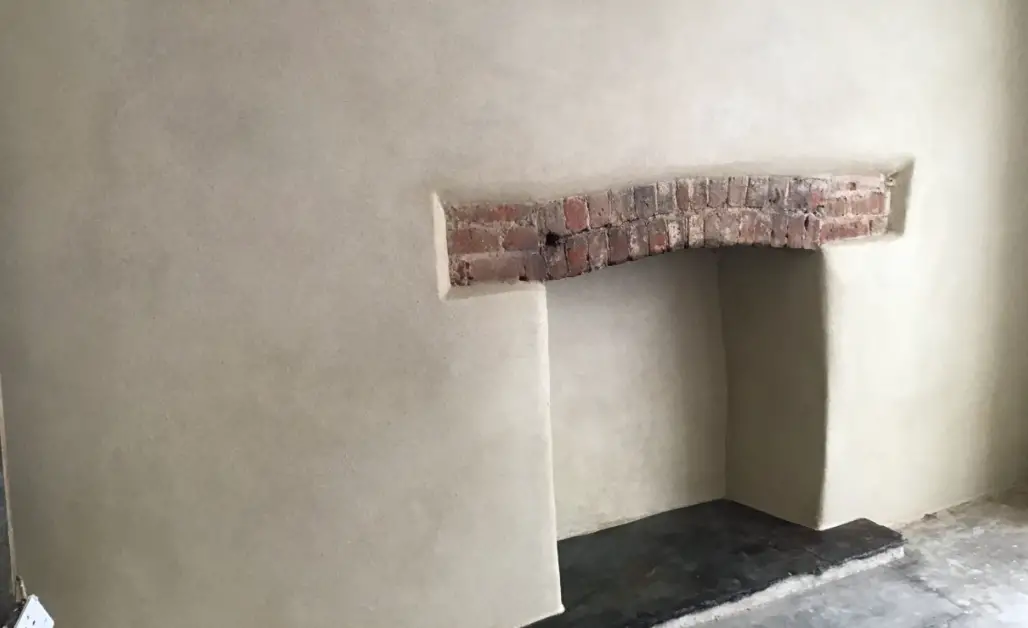


Leave a Reply